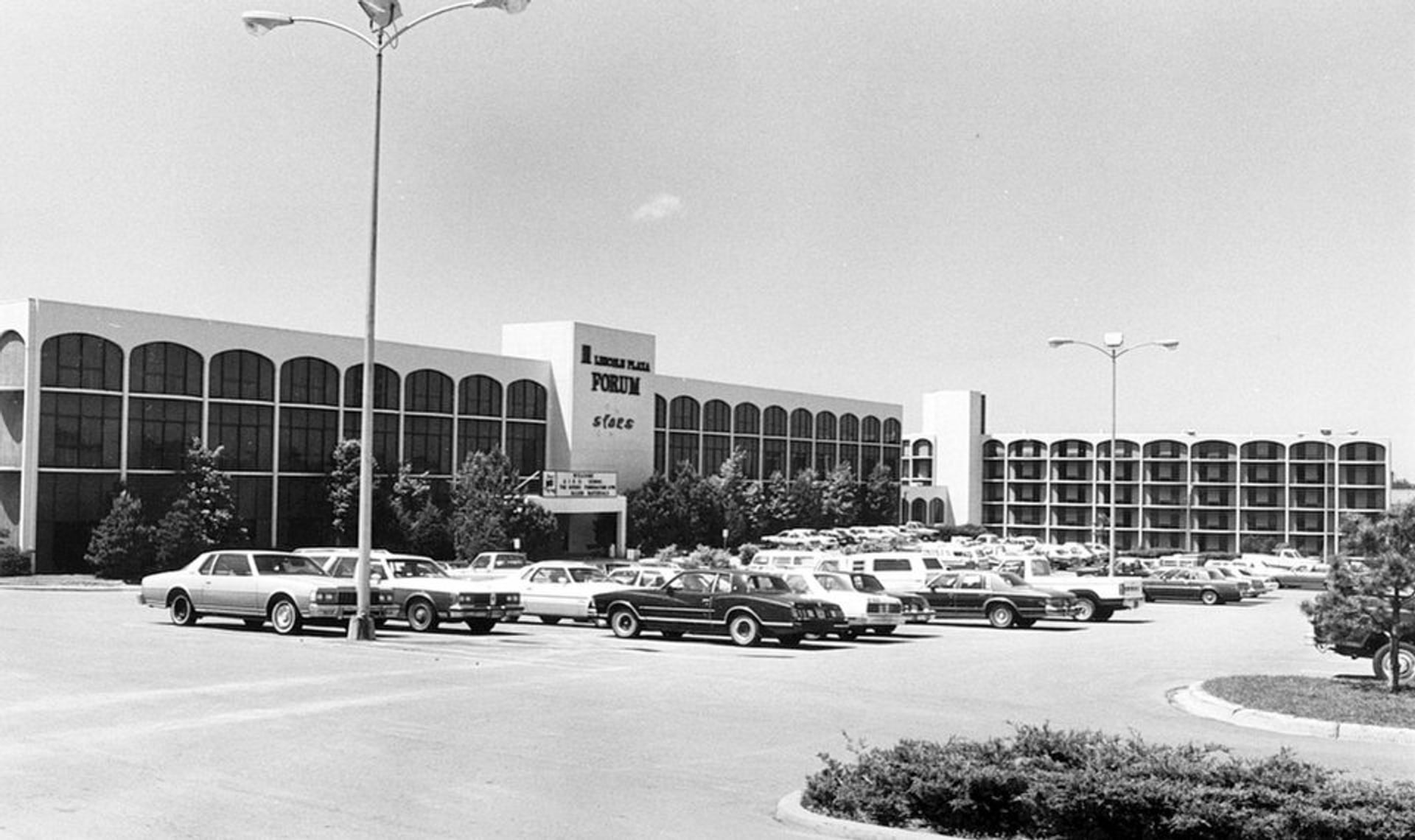
The Past Behind the Presley Apartments in Oklahoma City | The Presley
Want to be a part of history? Why not live in a registered historical landmark? Consider life at The Presley Apartments, the latest luxury apartments from developer Gardner Tanenbaum located in what was once the renowned Lincoln Plaza Hotel.
Placed on the National Park Service’s Register of Historic Places in 2016, the Lincoln complex opened in 1967 and served as one of Oklahoma City’s premier hotels and meeting areas throughout the 70s and 80s. Its strategic location–just 2 miles from the Capitol Complex–and New Formalism-avantgarde style attracted visiting celebrities, social vanguards, and upscale travelers. Now, as The Presley Apartments, the building maintains the same verve and vivacity as it did in years gone by, creating a vibrant energy all its own.
Although the Lincoln Plaza Hotel has seen its fair share of Oklahoma City’s history, the area in which it sits–south of I-44 and between I-35 and I-235–has seen even more, dating back to the days before Oklahoma was even a state. Let’s take a stroll through the ages to see how the area around The Presley Apartments became the heartbeat of the city.
At the Center of It All–A History of the Area
The area that would become home to The Presley Apartments is one that first put Oklahoma City on the map. Oklahoma achieved statehood in 1907, and just a few years later, the people voted to move the capital from Guthrie to Oklahoma City. The city quickly expanded and flourished, producing movers and shakers whose impact is still felt today.
The city hummed with political and government leaders, musicians, doctors, judges, oilmen and more, hustling and securing deals in the central district. Some names you might recognize include three former state governors (Roy J Turner, Johnston Murray, and Robert S. Kerr); top military leaders; an aviation pioneer, a religious leader, government leaders and more.
The district around Lincoln Boulevard and the capitol complex was a booming area of entrepreneurs and flowing opportunities, a place where dreams were made. Business people had the chance to make millions overnight, and it was here that many of Oklahoma’s most notable homes, futures, and legends were built.
An example of the drama developing along with the city skyline is the oil rig situated at the Governor’s Mansion, a half-mile west of the Capitol building. As the oil boom continued, oilmen were looking to drill near the Capitol complex. The city council voted against authorizing drilling but Oklahoma Gov. E.W. Marland, who was an oilman too, defied the council’s directive and put the area under martial law. He began issuing drilling permits, and soon, oil derricks and tanks were within the Capitol property, with one rig placed smack dab in the garden of the Governor’s Mansion.
While the oil boom was a big feature in the 1920s, there also were top-notch medical complexes popping up nearby, including the School of Medicine Building, which was built in the late 1920s. Many of the state’s best doctors were being trained and employed in the buildings that would eventually grow into today’s Health Sciences Center, a world-renowned medical and research institution near the capitol complex.
An Apex of Architecture
The Lincoln Boulevard area also became the site of some of Oklahoma City’s most beautiful and prestigious homes, with architecture and design that rivaled those in some of the country’s wealthiest communities. The style spilled over into professional buildings, state offices, and businesses–like The Presley Apartments’ future home, the Lincoln Plaza Hotel–creating a perfect blend of Greco-Roman, modernist, and classical ambiance that continued well into the 60s and 70s.
Here are just a few examples of the city’s enlightened designs:
Many of the homes in the nearby communities were built by a renowned developer named G.A. Nichols. His most well-known projects include the Nichols Hills development and one of the unique buildings in the Paseo District.
Lincoln Terrace, a neighborhood designated as a historic preservation district in 1974 and placed on the National Register of Historic Places in 1976, is just a couple miles south of The Presley Apartments. This area offers a glimpse into the architecture back in 1918. Most homes boast expansive interiors, beautiful staircases, countless fireplaces and plenty of natural light from multiple windows.
To the east is the Lincoln Terrace East District, which was further developed in the 1920s-1940s. These home styles differ mostly in size from the original homes built in the Lincoln Terrace nearer the Capitol. The smaller homes are single story and have remained mostly undisturbed through the years, demonstrating the character, class, and charm from bygone days.
The Governor’s Mansion was completed in 1928. The home stands out among other homes built during that time because, while most residences were brick, the Mansion was made of limestone to complement the Oklahoma State Capitol.
Where Past Meets Present
In Oklahoma City, history is never far from reach. Many of the buildings and places that built the city are still in use and enjoyed today. One is the Maywood Presbyterian Church, another historical landmark just west of OU Medical Center. This church was platted in 1893 and completed in 1907. The building was the first permanent church structure built in Oklahoma City, and today, it serves as the Oklahoma Department of Commerce office.
Another is nearby Stiles Park, Oklahoma City’s first park established in 1901. It was named after an early peacekeeper named Captain Daniel Frazier Stiles. If you visit the park today, you’ll see the Beacon of Hope monument, a structure that shines a mile-high light into the sky to symbolize the power of human spirit and hope.
Here are some other ways you can experience Oklahoma City’s yesterday today:
Take a Trip to the Zoo
The Oklahoma City Zoo opened before statehood in 1905, but it was soon relocated to the new capital in what is now the city’s Adventure District, just minutes northeast of the Presley Apartments. Its first resident was reportedly a deer fawn, and within a few years, the zoo boasted a hundred different animals to observe.
Go Golfing
The Lincoln Park Golf Course, also in the Adventure District, was opened to the public in 1922 (one century ago!) as a nine-hole course situated between a forest. After many heated conversations that spanned nearly three years, the city parks trust finally approved the building of a clubhouse in 1926. Today, the course boasts two impressive, championship courses–and a new clubhouse.
Visit Museums
You can also explore more of Oklahoma City’s history at over 20 museums and historical centers. The Oklahoma Railway Museum was founded in the 1970s to provide an educational experience of railroads and how they shaped Oklahoma and the nation. Visitors can see a working steam-engine and ride a train.
The 45th Infantry Museum features military history and memorabilia artifacts from Oklahoma’s rich military tradition, and the nearby Oklahoma History Center–a Smithsonian Affiliate–boasts more than 50 topics and 2,000 artifacts exploring Oklahoma’s adventurous past.
Claim Your Place in History at The Presley Apartments
Come create your own history at The Presley Apartments. There’s plenty to enjoy around the neighborhood, just like there always has been, and now there’s even more right outside your door. The Presley Apartments are leasing now, ready for you to make your mark on this growing city. Contact our office and book your tour today.
